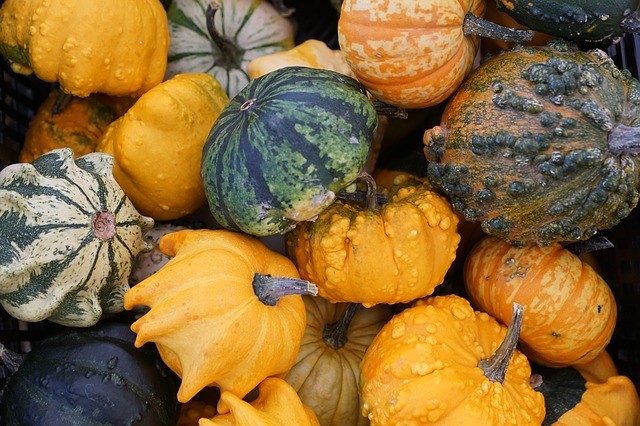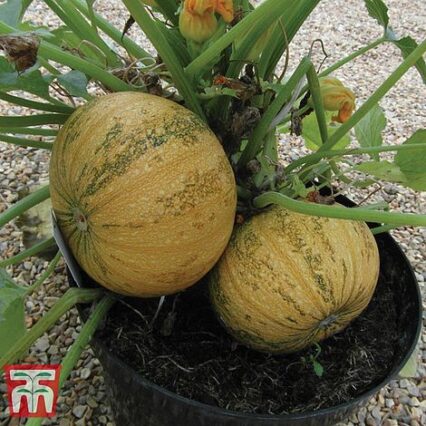A warming dish with winter squashes really cheers up a chilly day. There are all sorts of interesting colours, shapes and sizes that you can grow, and they make an attractive addition to any veggie patch.
Winter squashes can be stored for a long time, making them much more versatile than summer squashes.

Winter Squash Varieties
Butternut squash has a long shape and rounded bottom. They have orange coloured, tasty flesh. There are lots of varieties of butternut squash available.
Golden Hubbard is a heritage winter squash that is well worth growing. It has a rich orange, knobbly skin. The flesh is yellow and sweet tasting. It stores very well.
Crown Prince is an old variety that has a good flavour. The skin is a blue/green colour and the flesh is orange.
When to Sow Winter Squash Seeds
Sowing seeds for winter squashes can be done in April and May, either indoors or under glass.
Fill some pots small to medium sized pots with seed compost and put one seed in each, at a centimetre deep. Water and leave to germinate. The seedlings should begin to appear a week to ten days later.
As the seedlings grow, make sure they have plenty of room for the roots to develop by potting them on into bigger pots.
Planting Winter Squashes
Once the winter squash plants are at a good size and there is no risk of frosts, you can plant them outside. Harden them off for a week first by putting them outside in their pots for long spells, so they get used to the change in temperature.
Choose a warm site in full sun. They like to ramble, so a good amount of space is needed. Alternatively, the trailing stems can be trained to grow up a fence, wall or pergola. Some varieties can be grown in containers.
Winter Squashes are vigorous plants that like a lot of nutrients. For a good crop, prepare the soil in advance. Dig a hole, or trench, that’s is approximately 30-40 cm deep and fill up halfway with some rich organic matter, such as compost or well-rotted manure. Fill the rest of the hole with normal garden soil and add a bit extra to make a mound.
Leave for a month or two before planting your squashes. The organic matter will help to feed these hungry plants throughout the growing season.
As the fruits develop, raise them up off of the damp soil to prevent them from rotting. Pieces of old pallet are good to use for this.
Harvesting Winter Squashes
Winter squashes are ready to harvest once the skin has thickened and the stalk is dry.
Winter squashes stored in a cool place are good to eat for many weeks.
What else can I grow in my garden? Back to grower’s guides.

